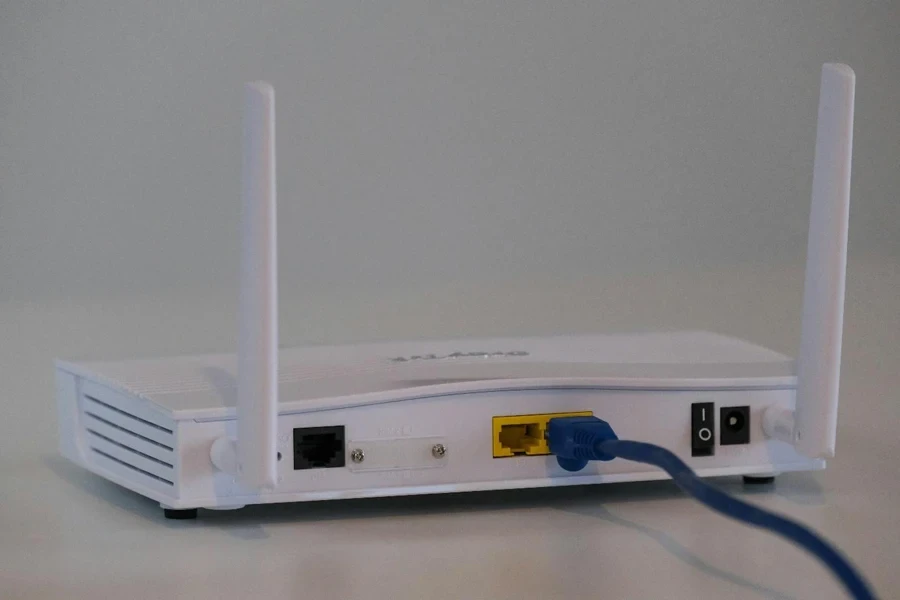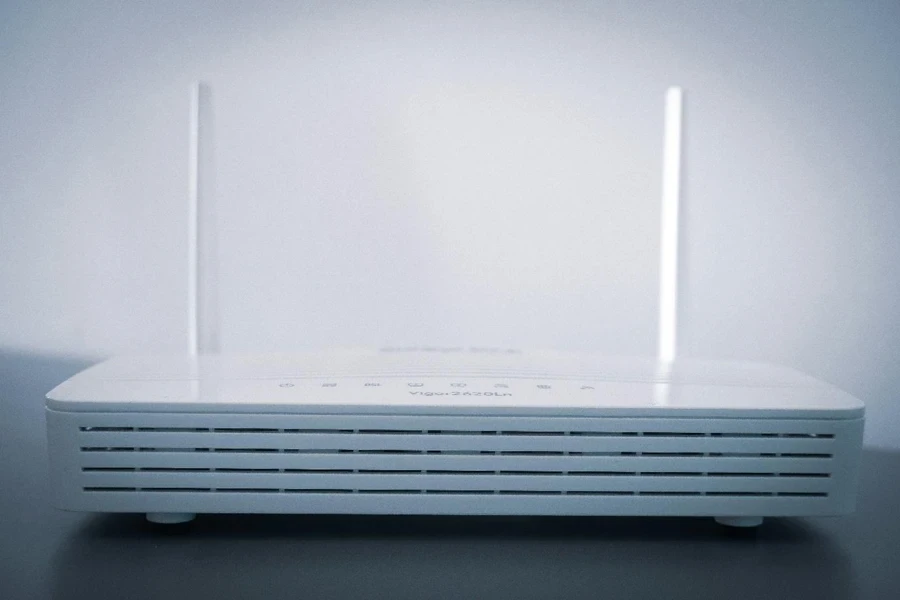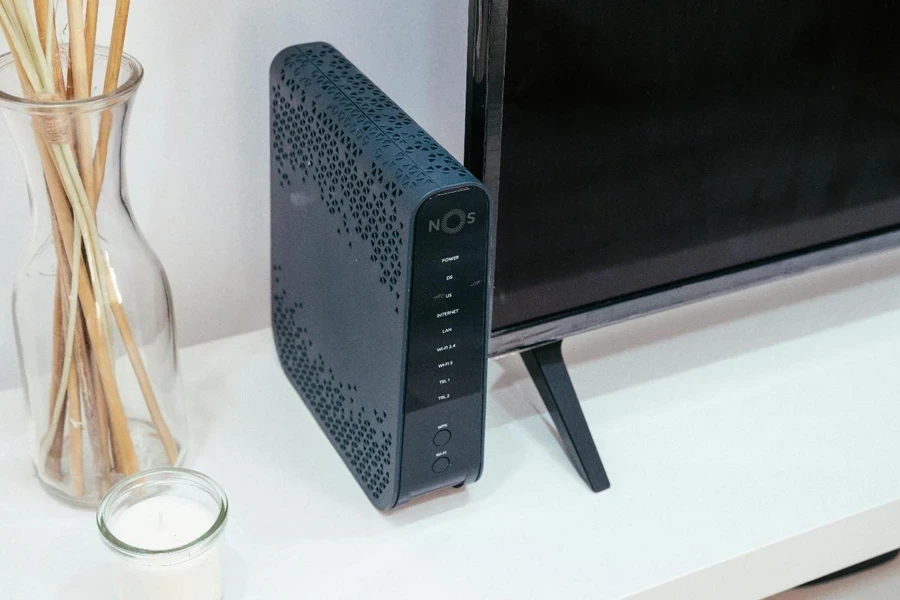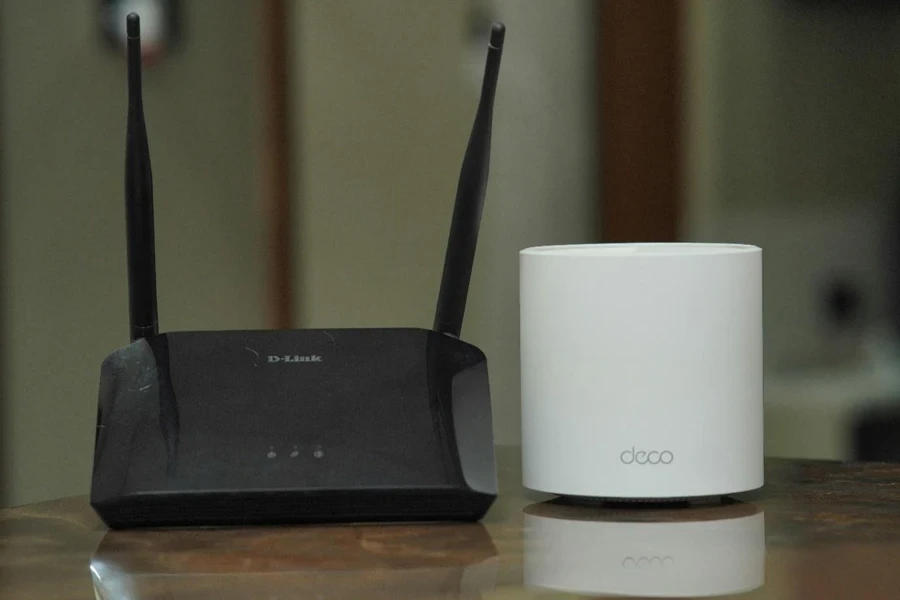Key Takeaway
- Market Growth: Router market valued at $21.31 billion in 2023, projected to reach $38.46 billion by 2030 with a 7.22% CAGR.
- Regional Leaders: North America leads, Asia-Pacific, particularly China and India, rapidly growing.
- Technology Innovations: Wi-Fi 6, Wi-Fi 7, and Li-Fi driving router advancements.
- Security Features: Modern routers include WPA3 encryption, VPN support, and advanced firewalls.
- Design Evolution: Multi-band, mesh networks, and improved antennas enhance coverage and performance.

Routers are the backbone of modern connectivity, facilitating seamless communication across networks. This article delves into the current state of the router market, highlighting significant technological advancements and identifying top models driving industry trends.
Market growth is fueled by innovations in Wi-Fi standards, IoT integration, and enhanced security features. High-performance and budget-friendly routers are shaping the landscape, catering to diverse consumer and commercial needs. Understanding these developments is crucial for staying ahead in an increasingly connected world!
Table of Contents
● Market overview
● Key technology and design innovations
● Top-selling models driving market trends
Market overview

Market scale and growth
The global router market was valued at USD 21.31 billion in 2023 and is projected to reach USD 38.46 billion by 2030, growing at a compound annual growth rate (CAGR) of 7.22% according to Virtue Market Research.
Historical data shows steady growth, with significant acceleration anticipated due to advancements in wireless technologies and increasing demand for connectivity solutions. This growth trajectory underscores the expanding role of routers in both consumer and commercial applications.
Regional insights
Regional analysis indicates that North America holds the largest market share, driven by high internet penetration and technological adoption. Emerging markets in the Asia-Pacific region, particularly China and India, are experiencing rapid growth due to the increasing number of internet users and the adoption of smart home technologies.
Europe also shows substantial market activity, with a focus on enhancing network infrastructure. Consumer applications, such as home networking and smart devices, dominate the market, while commercial uses in enterprises and public sectors are also expanding significantly.
Key technology and design innovations

Emerging technologies
The router industry is undergoing transformative changes with the implementation of cutting-edge technologies such as Wi-Fi 6, Wi-Fi 7, and Li-Fi.
Wi-Fi 6 (802.11ax) enhances network efficiency by utilizing OFDMA (Orthogonal Frequency Division Multiple Access) for better bandwidth allocation and MU-MIMO (Multi-User, Multiple-Input, Multiple-Output) for improved simultaneous data transmission.
Wi-Fi 7 (802.11be) promises to push these capabilities further with features like 320 MHz channel bandwidth and 4096-QAM modulation, significantly increasing data rates and reducing latency.
Li-Fi, which transmits data using visible light communication, offers advantages such as reduced electromagnetic interference and higher security levels due to the contained nature of light signals. These advancements are crucial for managing the growing number of IoT devices, which require robust and reliable connectivity to function seamlessly in smart homes and industrial applications.
Advanced security features
Modern routers incorporate advanced security protocols to counteract the increasing sophistication of cyber threats.
Features like WPA3 encryption provide enhanced protection against brute-force attacks, while integrated VPN support ensures secure remote access by encrypting data traffic.
Routers now also include built-in firewalls and intrusion detection systems (IDS) that monitor network traffic for suspicious activity and automatically block potential threats.
Additionally, advanced parental controls and network segmentation capabilities allow administrators to create isolated network zones, limiting the spread of malware and enhancing overall network security.
Design innovations
The evolution of router design focuses on both performance enhancement and user convenience.
High-performance routers now feature multi-band capabilities, typically offering tri-band frequencies (2.4 GHz, 5 GHz, and 6 GHz) to optimize network load distribution and reduce interference.
Advanced beamforming technology directs signals towards connected devices rather than broadcasting in all directions, thereby improving signal strength and coverage.
Antenna design has also seen significant improvements, with high-gain antennas and antenna arrays providing broader and more reliable coverage.
The introduction of mesh networking systems allows for seamless coverage across large areas by using multiple nodes to eliminate dead zones and ensure consistent connectivity throughout homes and offices.
Performance enhancements
Routers are now equipped with a host of features designed to maximize performance and user experience.
Technologies such as dynamic frequency selection (DFS) help avoid interference by automatically switching to less congested channels.
Quality of Service (QoS) settings prioritize bandwidth allocation to critical applications like video streaming and online gaming, ensuring minimal latency and buffering.
Routers with advanced processor units and increased RAM can handle more simultaneous connections and high data throughput, crucial for environments with multiple high-bandwidth devices.
Additionally, support for multi-gigabit Ethernet ports enables faster wired connections, catering to the needs of users requiring ultra-fast and stable internet access for activities such as large file transfers and competitive online gaming.
Top-selling models driving market trends

High-performance routers
High-performance routers are setting new benchmarks with unparalleled speed and range, essential for demanding applications like gaming and 4K streaming. These routers often incorporate Wi-Fi 6 and the latest Wi-Fi 7 technologies.
For instance, Wi-Fi 6 routers use OFDMA (Orthogonal Frequency-Division Multiple Access) and MU-MIMO (Multi-User, Multiple Input, Multiple Output) technologies to efficiently manage bandwidth across multiple devices, minimizing latency and improving overall performance.
Wi-Fi 7 routers push these capabilities further with 320 MHz channel bandwidth and 4096-QAM modulation, enabling data rates exceeding 10 Gbps. Advanced models feature multi-gigabit Ethernet ports, typically including two 10 Gbps and several 2.5 Gbps ports, ensuring rapid wired connections. Additionally, high-gain antennas and beamforming technology enhance signal strength and coverage, ensuring a robust network for large homes or offices.
Budget-friendly options
Affordable routers are increasingly offering robust performance by integrating advanced features typically found in higher-end models. These budget-friendly options often include Wi-Fi 6 technology, which provides substantial improvements over older standards.
Key features include support for 160 MHz channels and 1024-QAM modulation, allowing for faster data transfer rates and increased network efficiency. These routers usually come with gigabit Ethernet ports and basic MU-MIMO capabilities to handle multiple devices simultaneously.
Some models also feature dual-band support, offering both 2.4 GHz and 5 GHz frequencies to optimize network performance and reduce interference. Budget routers may lack the extensive range of high-end models but still provide reliable coverage for small to medium-sized homes.
Specialized routers
Specialized routers cater to specific needs such as gaming, smart homes, and extensive coverage areas. Gaming routers often feature tri-band support and high-speed processors, such as quad-core CPUs, to manage intensive data flows. They also include advanced QoS (Quality of Service) settings to prioritize gaming traffic, reducing lag and latency.
Smart home routers integrate seamlessly with IoT devices, offering features like Zigbee or Z-Wave compatibility for smart home automation. They often include built-in security protocols to protect connected devices from cyber threats.
For large coverage areas, mesh Wi-Fi systems use multiple nodes to create a unified network. These systems employ technologies like dynamic backhaul selection and self-healing capabilities to ensure consistent coverage and optimal performance throughout large spaces, eliminating dead zones and maintaining high-speed connections.
Conclusion

The router market is experiencing significant growth, driven by technological innovations and evolving consumer demands. With advancements in Wi-Fi technologies, enhanced security features, and specialized designs catering to various needs, routers are becoming more integral to both residential and commercial networks.
Understanding these trends and advancements enables businesses and consumers to make informed decisions, ensuring robust and efficient connectivity in an increasingly connected world.




